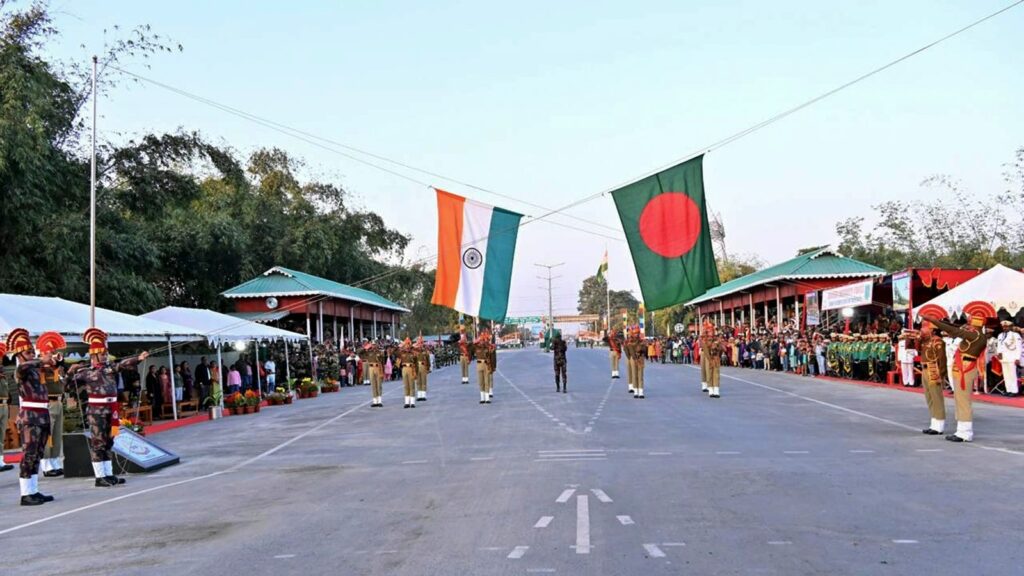Tensions between India and Bangladesh have escalated recently due to a dispute over border fencing, particularly concerning a 150-yard strip of land along their nearly 4,100-kilometer border. This situation has been exacerbated by political changes in Bangladesh and ongoing security concerns.
Background of the Dispute
India has been actively installing wire fencing along its border with Bangladesh, a move that has drawn strong objections from Dhaka. The Bangladeshi government cites a 1975 agreement that prohibits any defensive structures within 150 yards of the international border, arguing that India’s fencing violates this accord. In contrast, India maintains that the fencing is not a defense structure but a necessary measure to curb illegal infiltration and cross-border crime, including smuggling and trafficking
Recent Developments
The situation intensified on January 8, 2025, when India resumed fencing work, leading to clashes between local civilians and border forces. Bangladesh’s Ministry of Foreign Affairs summoned the Indian high commissioner to express deep concerns over these activities, which they deemed unauthorized and provocative. Reports indicated that the Border Security Force (BSF) was involved in incidents resulting in casualties among Bangladeshi citizens.In response to these tensions, high-level talks between the BSF and the Border Guard Bangladesh (BGB) are scheduled for February 17-20, 2025, in New Delhi. This will be the first meeting since the political shift in Bangladesh following the ousting of Sheikh Hasina’s government last August. Both nations are expected to discuss border-related issues and seek to honor existing agreements to ensure security and cooperation along the border.
Concerns from Bangladesh
Bangladesh has expressed fears that India’s “smart fencing,” which includes advanced surveillance technologies like CCTV cameras, could infringe on its sovereignty by allowing India to monitor Bangladeshi territory closely. The BGB argues that such measures create difficulties for local populations living near the border.Moreover, the political climate in Bangladesh has shifted post-Hasina, with rising anti-India sentiment and calls for a reassessment of bilateral agreements perceived as disproportionately favoring India. This context adds urgency to the upcoming discussions between the two countries
Conclusion
The India-Bangladesh border situation remains complex and fraught with challenges. As both sides prepare for high-level talks, there is hope for a resolution that respects mutual agreements while addressing security concerns. The outcome of these discussions could significantly impact future relations between the two neighboring countries amid shifting political landscapes.


